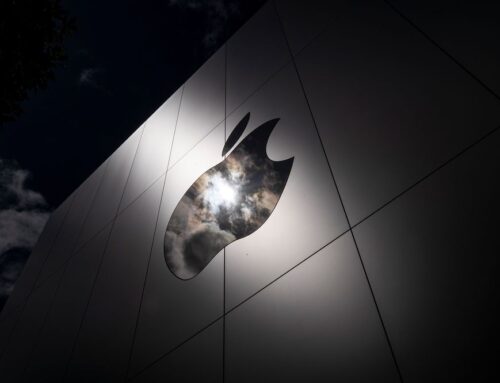Originally published on 3/30/20
The Event
The current health crisis due to the novel coronavirus (COVID-19) is having a considerable impact on public events. As of today, the following events have been canceled or postponed: COVID-19’s Greatest Hits. Given that the business model for music industry artists has shifted to the streaming + live performance model, the cancellation of these events will have a potentially dramatic effect on industry revenues and venues, both up and down.
Why Care?
Live music and corresponding revenue are projected to be about $28B in 2020. We see this dropping by as much as 60 percent this year due to the unprecedented global quarantine and cancellations as a result of the pandemic. This includes events small and large, from intimate clubs to concerts in the park, to large scale music festivals and arena shows and sports events. Essentially, anywhere where more than one person congregates is off-limits. And there is no consensus on a time frame for the removal of these voluntary and mandated restrictions. The current expectation is that the disruption will continue for 18 months or longer.
The Impact
So, is this the death of live music? No. But it means a decline of the live in-person music experience to which we are accustomed.
We predict, with 80 percent certainty, that the solid growth of streaming music will continue to grow market share as a massive shift to live streaming will occur. Live streaming will be the new norm for concert goers. In the end, we think that in-person location-specific concerts will struggle to recover on a large scale.
We have identified a market basket of technology and business disrupters that will have the greatest impact on this marketplace over the next five years. To the extent that live streaming supplants the location-specific concert market, these technologies will play a role. These technologies include:
- Augmented reality, virtual reality, and 3D
- Mobile devices, including wearable tech
- Cloud-based distribution and delivery of content, including streaming
- Social Media, including associated providers and software
- Cloud-enabled hardware-, software-, and tools-as-a-service
- Artificial Intelligence of all types
- Intellectual property protection (e.g., copyright, patent, fair use)
- Communications networking technology (including 5G networking)
- Manufacturer/vendor/publisher M&A
- Blockchain
- Internet of Things (IoT)
Introducing the ARAS SPECTRUM
What role will each of these have? We rank them below from beneficially impacted (“Winner”) to negatively impacted (“Challenged”). We refer to this ranking as the ARAS SPECTRUM.
- Winners – disrupters that will advance in capability, demand, and revenues
- Neutral – disrupters that will continue on the same path as before this event
- Challenged – disrupters that will potentially lose capabilities, demand, and revenues
ARAS SPECTRUM – Impact of COVID-19 on the Audio and Entertainment Industry
Winner –Cloud-based distribution and delivery of content, including streaming. As noted above, with enhanced ticketing capabilities, live streaming will be the dominant platform for events going forward. A caveat, there may be bandwidth issues for those with low-end internet connections.
Winner – Social Media, including associated providers and software. Many of these platforms already support live streaming and offer the additional capability of conversation, rating, and sharing.
Winner – Communications networking technology (including 5G networking). All this content, so little bandwidth. As more people avoid outside contact, more traffic flows to the ISPs. Supply and demand will increase prices and revenues and accelerate the move to 5G and beyond.
Winner – Augmented and virtual reality have an inordinate opportunity to enhance the live streaming experience. They can create a sense of place and an immersive experience similar to live entertainment. They also have an advantage with an advanced audio presence that puts the optimal “center seat, ten rows back” or wherever the listener prefers. However, there are still challenges of cost, weight, and comfort as well as the current gaming focus of VR and AR headsets that may inhibit the uptake.
Winner – Mobile devices, including wearable tech, will enable the concert experience to be geographically agnostic. Like VR, advanced audio in mobile devices can create a live experience outside your living room.
Winner/Neutral – Blockchain adoption in the chain of IP ownership, ticket sales, and other distributed ledger applications may accelerate. The money will be changing hands in more complex ways as the supply chain of content adapts to the isolated consumer.
Neutral – Artificial Intelligence of all types. While AI technologies will continue to permeate applications, we don’t see a bump specific to the audio and entertainment industries due to the virus.
Challenged – Intellectual property protection (e.g., copyright, patent, fair use). As streaming has created chaos in the IP space, it will continue as consumers scramble for content, piracy will likely increase.
Challenged – Manufacturer/vendor/publisher M&A. It’s possible that market disruption will accelerate consolidation and that valuations will be as unstable as the equity markets.
Challenged – The Internet of things (IoT) will continue to expand as consumers feather their nests with smart devices and upgrade their home audio systems. Things will become smarter in capabilities like ordering online, coordinating with each other, and monitoring consumer behavior. However, as global supply chain breakdowns continue to be disrupted availability of these devices may be limited. Expect prices to increase as demand overwhelms supply.
Recommendations
The Audio + Entertainment sector will be significantly disrupted by the novel coronavirus for an extended period of time. In addition to the immediate issues of resource management, we recommend that industry executives, product, sales, marketing, and operations managers to immediately:
1. Determine how shifting demand in content consumption will affect GTM strategies and how quickly those strategies can adapt to new realities
2. Develop SWOT type analyses to determine the threats and opportunities that might exist
3. Identify the impact on seasonal business peaks (Summer festivals, Holiday spending, etc.)
4. Develop long term business disruption mitigation plans to improve agility going forward.
At A3E Research and Advisory Services (ARAS) we focus on advanced audio technologies in the music + entertainment industry. This is the first of a series of Take 5 articles. ARAS Take 5s are event-driven analyses of the markets we cover. They are intended to be read in five minutes or less.





